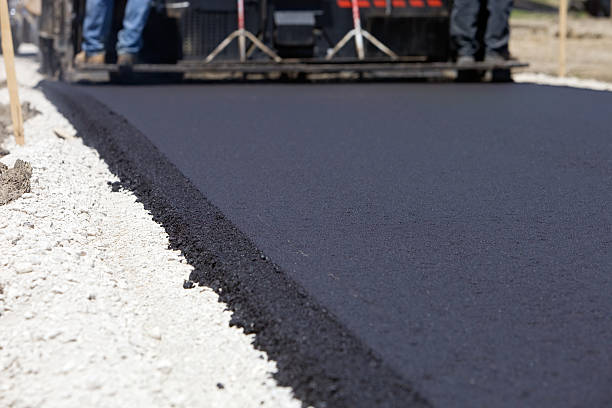Keeping your driveway paving clean can be quite a challenge, especially with regular vehicle traffic. However, maintaining its cleanliness is crucial for both its appearance and longevity. Over time, driveways can accumulate dirt, stains, and debris, impacting the overall appearance of your property. Keeping the paving clean not only enhances its appeal but also helps prevent further deterioration that can occur when grime builds up and water stagnates. This guide will provide you with straightforward steps to effectively clean your driveway paving.
Gather Your Supplies
To start, ensure you have all the materials and tools you are going to need for cleaning.
Essential Supplies
- Broom or Leaf Blower: For removing loose debris
- Pressure Washer: A powerful tool for deep cleaning
- Grease Cutter: Ideal for removing oil and grease on the patio
- Baking Soda and Vinegar: Effective for cleaning minor stains
- Water Spade: Used for wetting the areas of interest
- Gloves and Safety Goggles: For the protection of skin and eyes respectively
- Mop and Bucket: For areas that can’t use a pressure washer
- Scrub Brush or Stiff Bristle Brush: For tough stains
- Garden Rake: For larger debris and gravel driveways
- Sealant: To preserve a freshly cleaned driveway from future stains
Preparation
Clear Loose Debris
Begin by sweeping the driveway with a broom or using a leaf blower to clear any fallen debris, such as leaves or twigs, from the area. For a gravel driveway paving, sweep an area by using a garden rake to ensure evenness.
Assess the Condition
Examine your driveway closely for any signs of concern. Search for oil marks, mold, moss, and any other difficult stains. When washing, potential problems that might require repair should also be noted.
Choose a Suitable Day
Ideally, choose a day in the week with a moderate temperature, although the weather should not be sunny.
Cleaning Process
1. Pre-Treatment of Stains
Oil and Grease Stains
Oil and greasy stains are not easy to deal with at all. The first step is to use baking soda or a degreaser, and scatter it over the stains. It is recommended that it should be left to stand for 15-30 minutes. Then, scrub the area with a stiff brush. Rinse thoroughly with water.
Mold and Mildew
Mold usually affects the rock surface and tend to form where there is moisture especially in the cold areas and during the cold season. It also causes discoloration of the driveway. Use a solution of water with white vinegar in these areas, allowing it to sit for approximately 10 minutes before using a brush to remove. Rinse well with water.
2. General Cleaning
Pressure Washing
For a deep clean, use a pressure washer. Regulate the pressure of the equipment depending on the material used in paving to avoid damage. To do this, start by spraying water all over the driveway, especially the areas with the most stains. For those difficult-to-remove stains, switch to the nozzle attachment on a low power to prevent marking the pavement.
Mop and Bucket Method
If a pressure washer is not available, detergent should be diluted with water in a bucket. Cleaning the surface requires the use of a mop or brush to scrub the surface properly. After cleaning, rinse the area using a hose or water from a watering can to remove the soap.
3. Final Rinse
The final rinse on the surface of the driveway should be done after pre-treatment and general cleaning. Make sure that no soiled cleaning products are left behind.
Maintenance Tips
Maintenance of the driveway is essential.
Regular Sweeping
Regularly cleaning your driveway is highly encouraged to ensure that it does not accumulate an inordinate amount of dirt. For gravel surfaces, make sure that the terrain is flat and the gravel has been leveled properly.
Address Stains Promptly
Deal with spills and stains immediately, without leaving it to dry.
Apply Sealant
After washing the driveway and ensuring it is completely dry, apply a sealer. This will prevent future stains and other undesirable effects of the weather on the concrete structure.
Read Also: Is It Worth Sealing a Driveway?
Monitor for Damage
Look for any signs of cracking. Address these issues to avoid worsening of the situation.

